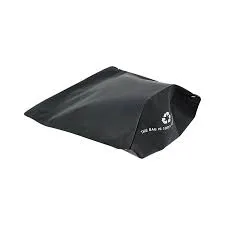Email: enid@bc-pak.com
Tel: 86-757- 88811186
- Afrikaans
- Albanian
- Amharic
- Arabic
- Armenian
- Azerbaijani
- Basque
- Belarusian
- Bengali
- Bosnian
- Bulgarian
- Catalan
- Cebuano
- chinese_simplified
- chinese_traditional
- Corsican
- Croatian
- Czech
- Danish
- Dutch
- English
- Esperanto
- Estonian
- Finnish
- French
- Frisian
- Galician
- Georgian
- German
- Greek
- Gujarati
- haitian_creole
- hausa
- hawaiian
- Hebrew
- Hindi
- Miao
- Hungarian
- Icelandic
- igbo
- Indonesian
- irish
- Italian
- Japanese
- Javanese
- Kannada
- kazakh
- Khmer
- Rwandese
- Korean
- Kurdish
- Kyrgyz
- Lao
- Latin
- Latvian
- Lithuanian
- Luxembourgish
- Macedonian
- Malgashi
- Malay
- Malayalam
- Maltese
- Maori
- Marathi
- Mongolian
- Myanmar
- Nepali
- Norwegian
- Norwegian
- Occitan
- Pashto
- Persian
- Polish
- Portuguese
- Punjabi
- Romanian
- Russian
- Samoan
- scottish-gaelic
- Serbian
- Sesotho
- Shona
- Sindhi
- Sinhala
- Slovak
- Slovenian
- Somali
- Spanish
- Sundanese
- Swahili
- Swedish
- Tagalog
- Tajik
- Tamil
- Tatar
- Telugu
- Thai
- Turkish
- Turkmen
- Ukrainian
- Urdu
- Uighur
- Uzbek
- Vietnamese
- Welsh
- Bantu
- Yiddish
- Yoruba
- Zulu
Side Gusset Pouch Packaging Bag
Views :
Update time : Feb . 14, 2025 20:23
Eco-friendly packaging has rapidly become a critical focus across various industries as businesses and consumers alike seek sustainable solutions to reduce environmental impact. With the rise of e-commerce and the increasing demand for delivery services, the importance of sustainable packaging is more pronounced than ever before.
Furthermore, several industry leaders have set ambitious goals to transition to 100% sustainable packaging within the next few years. These commitments are not only beneficial from a corporate social responsibility perspective but are increasingly demanded by consumers who prioritize sustainability in their purchasing decisions. Brands that can authentically integrate eco-friendly practices into their packaging are likely to gain a competitive edge and resonate more deeply with their audience. Critical to implementing eco-friendly packaging solutions is the collaboration between businesses, governments, and consumers. Government policies and incentives can help accelerate the adoption of sustainable materials and practices, while consumer awareness and demand drive businesses to continue innovating in this space. Education plays an essential role here, empowering consumers with knowledge about recycling, compostability, and other eco-friendly practices, ensuring that packaging ends up in the right waste stream. Innovative approaches such as reusable packaging systems are also gaining popularity. Companies like Loop are partnering with major brands to create reusable packaging that customers return for refilling, significantly reducing packaging waste. This system not only cuts down on waste but also offers consumers a convenient and sustainable shopping experience, fostering brand loyalty and long-term engagement. In conclusion, the shift towards eco-friendly packaging represents a necessary evolution for businesses looking to meet the expectations of a more environmentally-conscious consumer base. The landscape of packaging is rapidly transforming, driven by technological advancements and increasing awareness about the environmental impact of packaging waste. Brands that invest in sustainable packaging solutions stand to benefit from stronger brand loyalty, reduced environmental impact, and alignment with global sustainability goals. As this field continues to evolve, the possibilities for innovation and positive environmental impacts are promising and demand continued attention and investment from all stakeholders involved.


Furthermore, several industry leaders have set ambitious goals to transition to 100% sustainable packaging within the next few years. These commitments are not only beneficial from a corporate social responsibility perspective but are increasingly demanded by consumers who prioritize sustainability in their purchasing decisions. Brands that can authentically integrate eco-friendly practices into their packaging are likely to gain a competitive edge and resonate more deeply with their audience. Critical to implementing eco-friendly packaging solutions is the collaboration between businesses, governments, and consumers. Government policies and incentives can help accelerate the adoption of sustainable materials and practices, while consumer awareness and demand drive businesses to continue innovating in this space. Education plays an essential role here, empowering consumers with knowledge about recycling, compostability, and other eco-friendly practices, ensuring that packaging ends up in the right waste stream. Innovative approaches such as reusable packaging systems are also gaining popularity. Companies like Loop are partnering with major brands to create reusable packaging that customers return for refilling, significantly reducing packaging waste. This system not only cuts down on waste but also offers consumers a convenient and sustainable shopping experience, fostering brand loyalty and long-term engagement. In conclusion, the shift towards eco-friendly packaging represents a necessary evolution for businesses looking to meet the expectations of a more environmentally-conscious consumer base. The landscape of packaging is rapidly transforming, driven by technological advancements and increasing awareness about the environmental impact of packaging waste. Brands that invest in sustainable packaging solutions stand to benefit from stronger brand loyalty, reduced environmental impact, and alignment with global sustainability goals. As this field continues to evolve, the possibilities for innovation and positive environmental impacts are promising and demand continued attention and investment from all stakeholders involved.
Recommend products
Read More >>
Related News
Read More >>













